Abstract
A 30-cluster survey was carried out in order to estimate the incidence of neonatal tetanus in rural Côte d'Ivoire. Births in the 19 months preceding the survey were enumerated by interviewers in house-to-house visits. If a child born in that period had died, the interviewer asked a series of questions to establish a presumptive diagnosis of neonatal tetanus. A total of 41 deaths from neonatal tetanus was found in the study area among 2324 live births that occurred from 1 January 1981 to 31 July 1982. This gives a neonatal tetanus mortality rate of about 2%. Most deliveries and almost all deaths occurred at home, and only about 2% of neonatal tetanus cases were reported through the routine health information system. Birth in a clinic and antiseptic care of the umbilical cord protected infants from neonatal tetanus. Tetanus immunization of all women of child-bearing age is recommended as a preventive measure.
Full text
PDF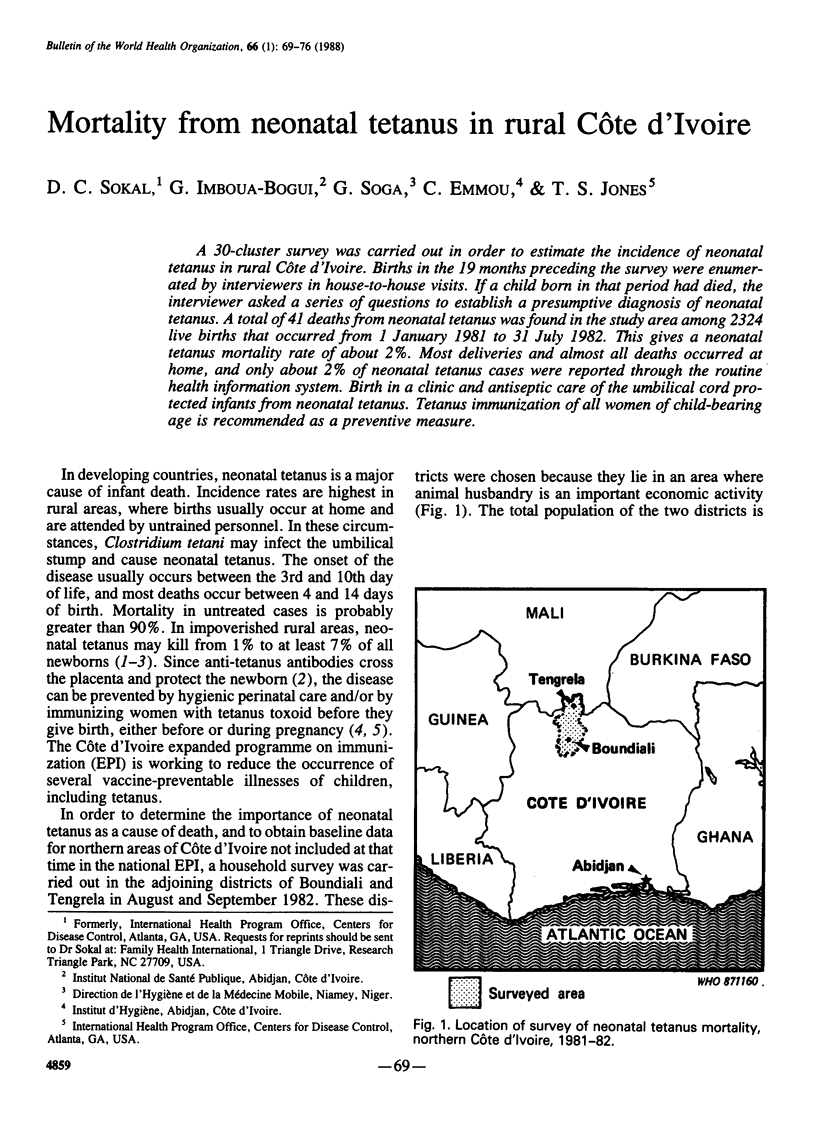
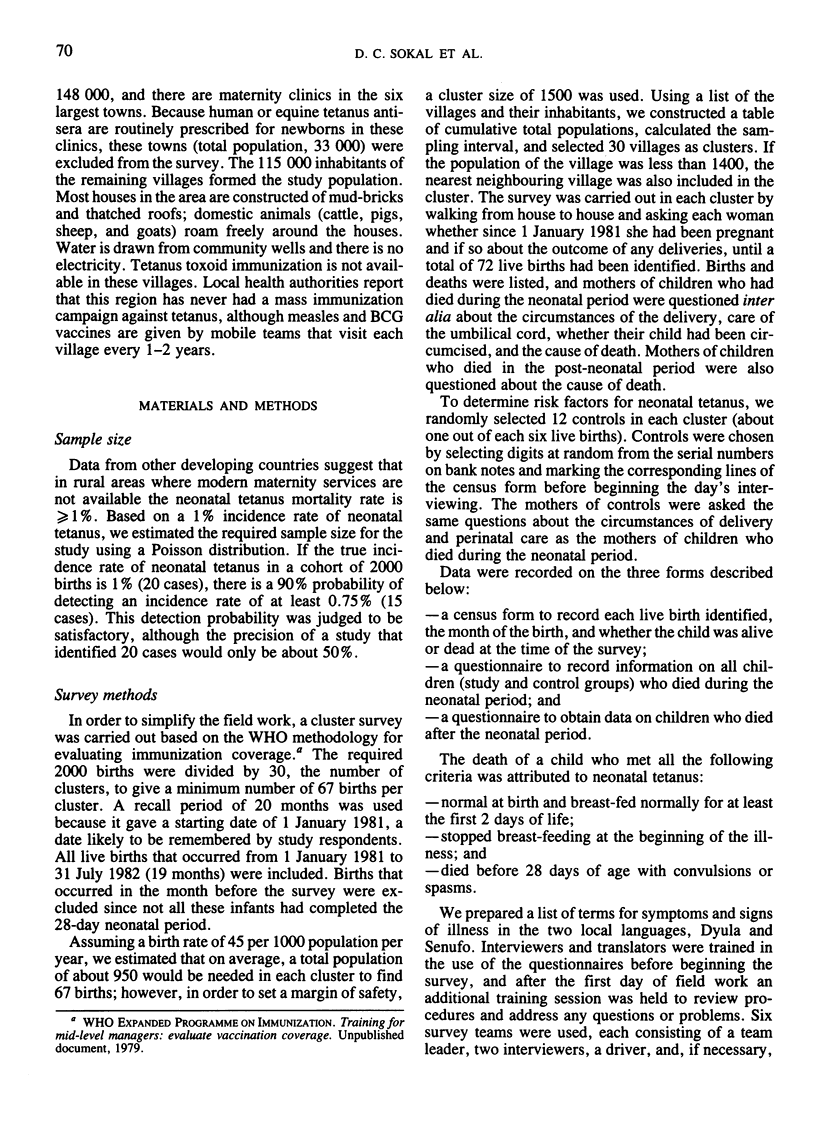
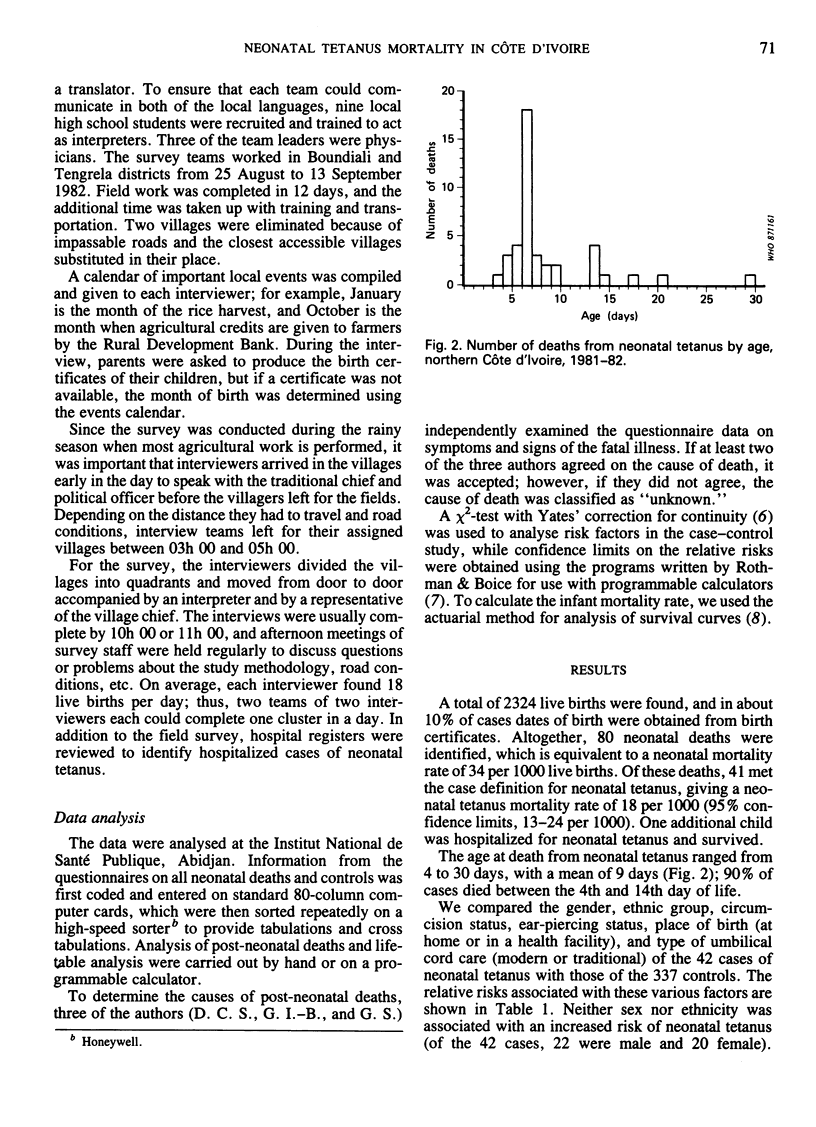
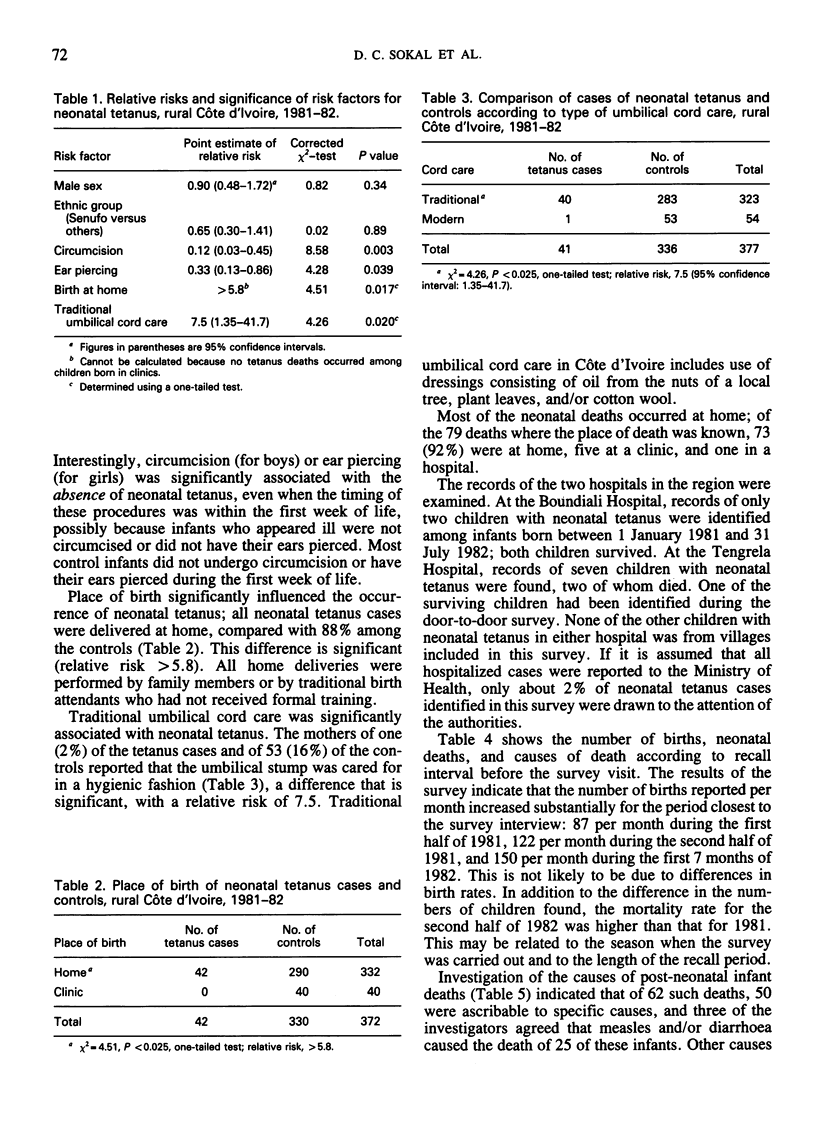
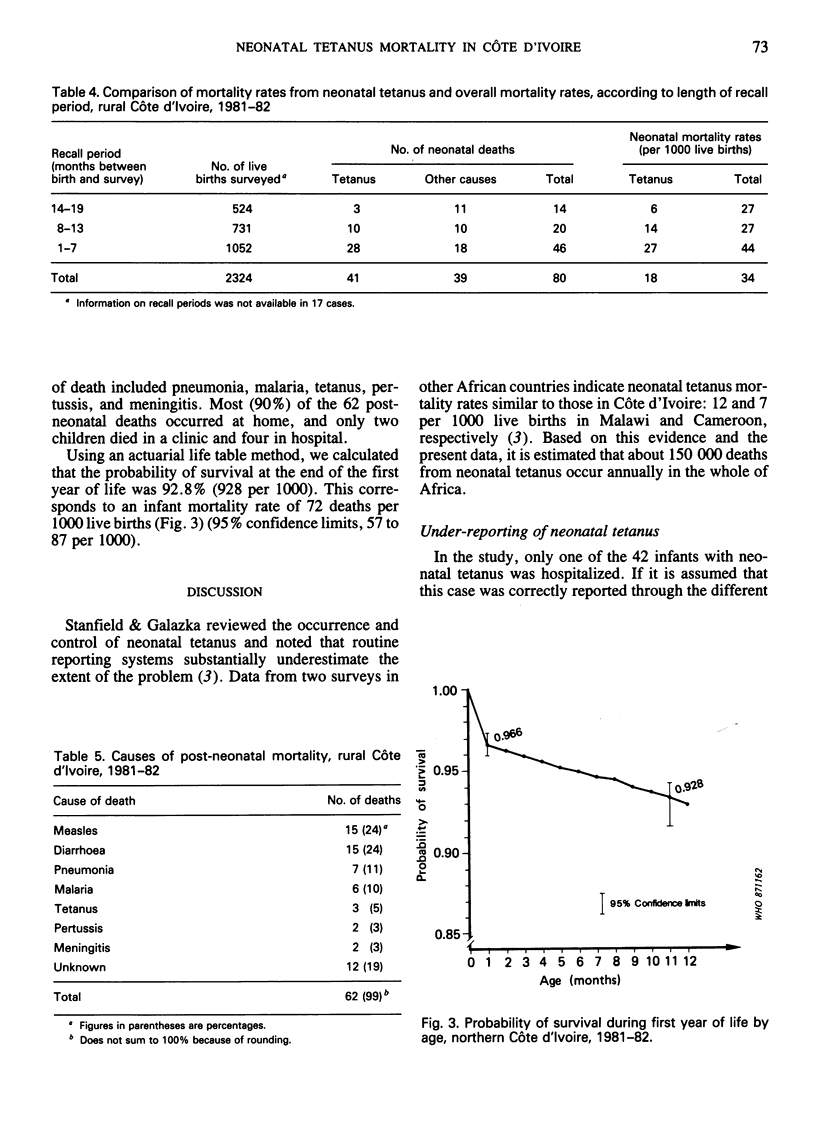
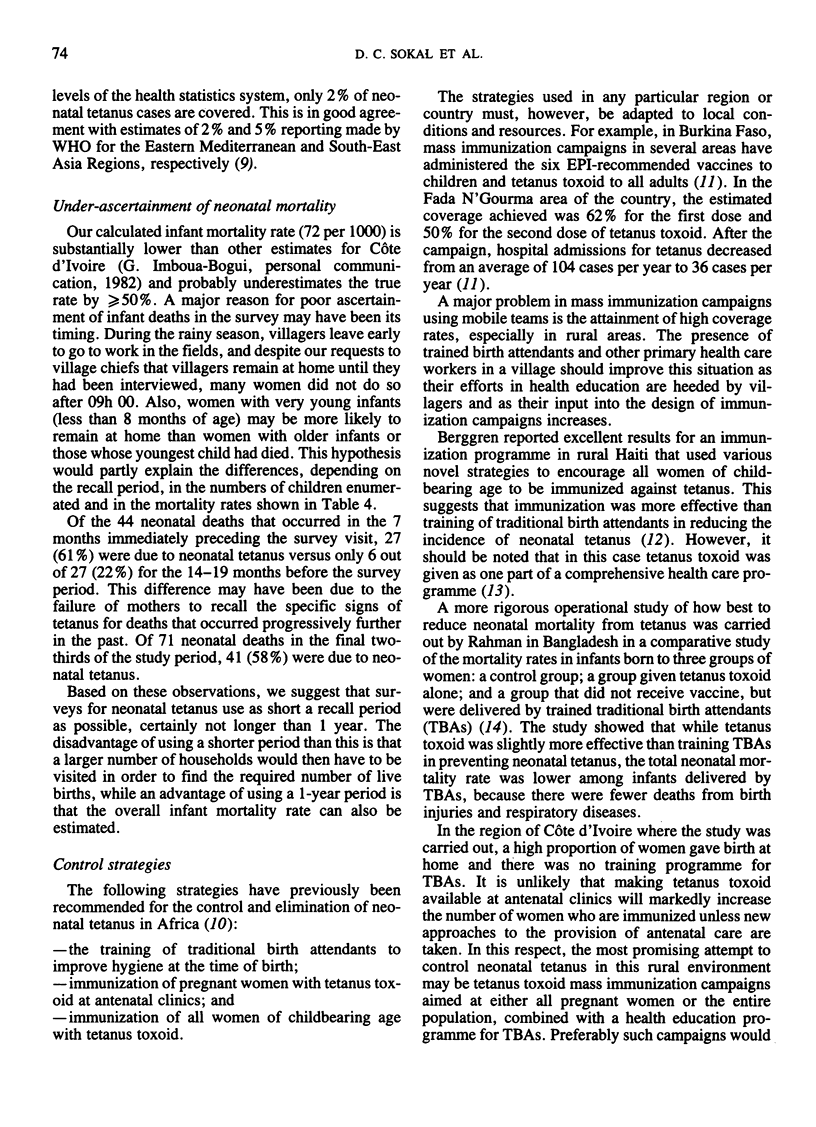
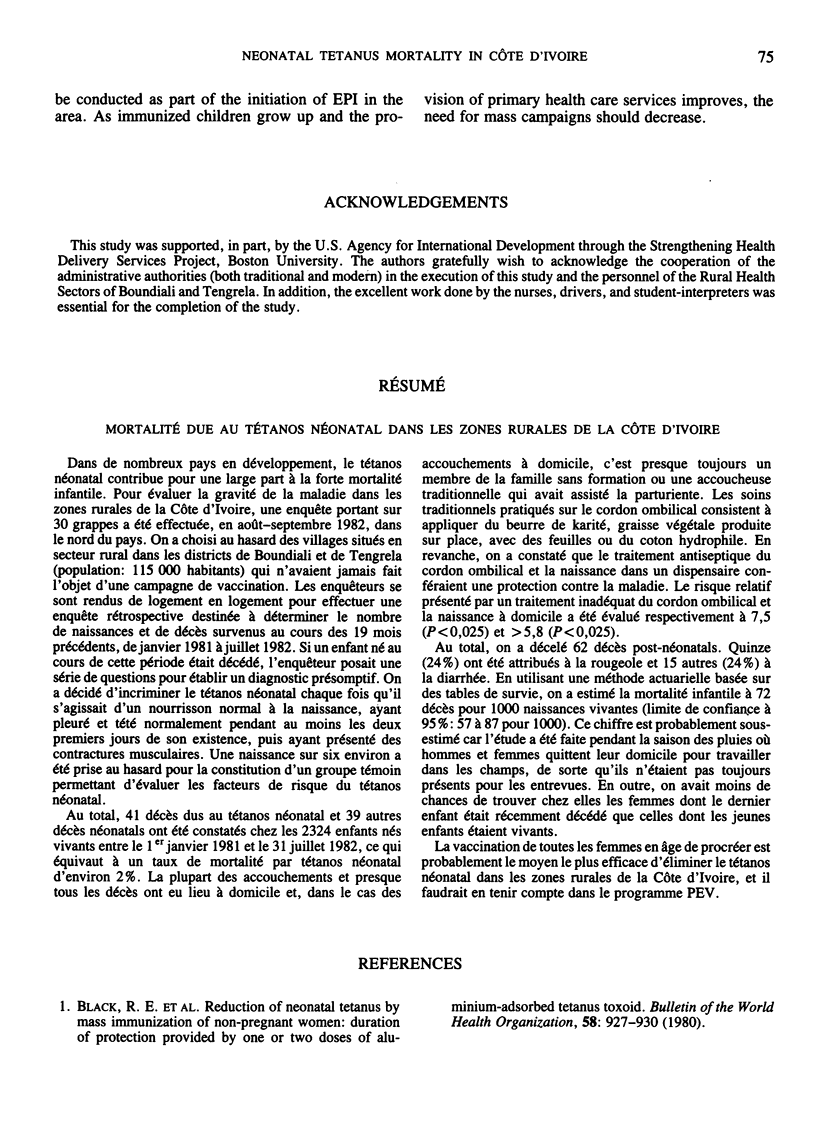
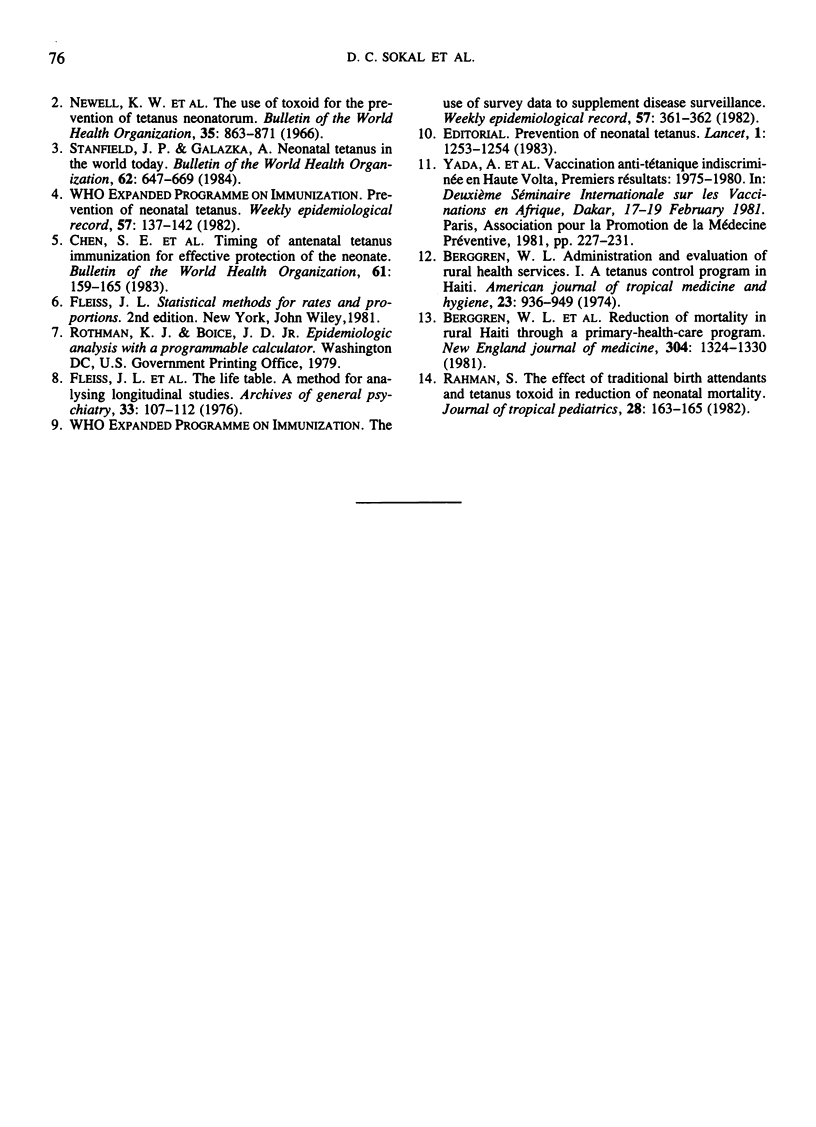
Selected References
These references are in PubMed. This may not be the complete list of references from this article.
- Berggren W. L. Administration and evaluation of rural health services. I. A tetanus control program in Haiti. Am J Trop Med Hyg. 1974 Sep;23(5):936–949. doi: 10.4269/ajtmh.1974.23.936. [DOI] [PubMed] [Google Scholar]
- Berggren W. L., Ewbank D. C., Berggren G. G. Reduction of mortality in rural Haiti through a primary-health-care program. N Engl J Med. 1981 May 28;304(22):1324–1330. doi: 10.1056/NEJM198105283042203. [DOI] [PubMed] [Google Scholar]
- Black R. E., Huber D. H., Curlin G. T. Reduction of neonatal tetanus by mass immunization of non-pregnant women: duration of protection provided by one or two doses of aluminium-adsorbed tetanus toxoid. Bull World Health Organ. 1980;58(6):927–930. [PMC free article] [PubMed] [Google Scholar]
- Chen S. T., Edsall G., Peel M. M., Sinnathuray T. A. Timing of antenatal tetanus immunization for effective protection of the neonate. Bull World Health Organ. 1983;61(1):159–165. [PMC free article] [PubMed] [Google Scholar]
- Fleiss J. L., Dunner D. L., Stallone F., Fieve R. R. The life table. A method for analyzing longitudinal studies. Arch Gen Psychiatry. 1976 Jan;33(1):107–112. doi: 10.1001/archpsyc.1976.01770010067013. [DOI] [PubMed] [Google Scholar]
- Newell K. W., Dueñas Lehmann A., LeBlanc D. R., Garces Osorio N. The use of toxoid for the prevention of tetanus neonatorum. Final report of a double-blind controlled field trial. Bull World Health Organ. 1966;35(6):863–871. [PMC free article] [PubMed] [Google Scholar]
- Rahman S. The effect of traditional birth attendants and tetanus toxoid in reduction of neo-natal mortality. J Trop Pediatr. 1982 Aug;28(4):163–165. doi: 10.1093/tropej/28.4.163-a. [DOI] [PubMed] [Google Scholar]
- Stanfield J. P., Galazka A. Neonatal tetanus in the world today. Bull World Health Organ. 1984;62(4):647–669. [PMC free article] [PubMed] [Google Scholar]


